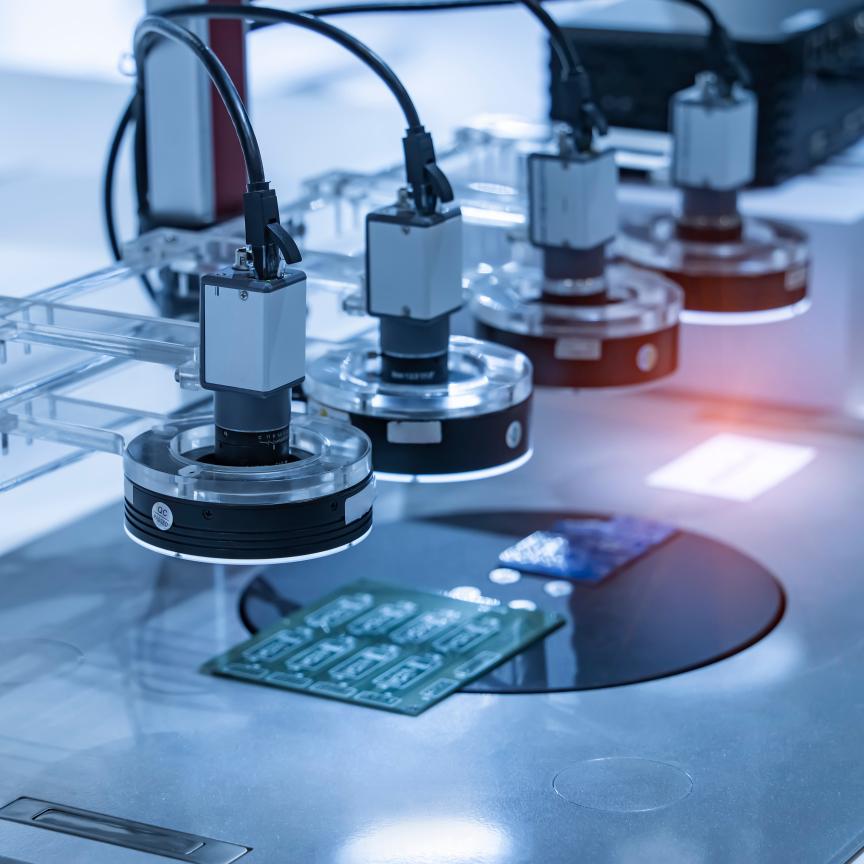The 33rd edition of the Top500 list, issued at last week's ISC09 conference in Hamburg, shows no change at the very top, but two systems from Germany have broken into the top 10, and a new player from Saudi Arabia enters at number 14.
The Top500 list, issued twice a year, both confers bragging rights on research institutions and manufacturers and serves as a valuable tool for tracking trends in supercomputer performance and architectures. The latest list reflects changes from November 2008 to June 2009.
Holding onto the No. 1 spot with 1.105 petaflop/s (quadrillions of floating point operations per second) is the Roadrunner system at DOE's Los Alamos National Laboratory (LANL), which was built by IBM and in June 2008 became the first system ever to break the petaflop/s Linpack barrier. It still is one of the most energy efficient systems on the TOP500.
'It's an honour to hold the record for the world's most powerful computer, but what is critical is building supercomputers that help advance the global economy and society at large,' said David Turek, vice president, IBM Deep Computing. 'IBM was the first to break the petaflop barrier and we will continue to apply lessons learned as we march toward the exaflop barrier.'
Maintaining its hold on second place is the Cray XT5 Jaguar system installed at the DOE's Oak Ridge National Laboratory. Jaguar reached 1.059 petaflop/s shortly after its installation but due to its heavy workload no further measurements were possible.
But in third place, a new contender has emerged - a new IBM BlueGene/P system called Jugene and installed at the Forschungszentrum Juelich (FZJ) in Germany. It achieved 825.5 teraflop/s (trillions of floating point operations per second) on the Linpack benchmarks and has a theoretical peak performance of just above 1 petaflop/s. FZJ is also home to the new No. 10 system. Called Juropa, it is built from Bull Novascale and Sun SunBlade x6048 servers and achieved 274.8 Tflop/s.
The two systems in Germany are the only non-US-based systems in the latest list. There are only two other new entries in the top 10. At No. 6 is a new Cray XT5 system called Kraken and installed at the National Institute for Computational Sciences at the University of Tennessee with a Linpack performance of 463.3 Tflop/s, making it the most powerful university-based system. The other new entry, at No. 9 with 415.7 Tflop/s, is a new IBM BlueGene/P system called Dawn installed at DOE's Lawrence Livermore National Laboratory.
Another notable system is the Chinese-built Dawning 5000A at the Shanghai Supercomputer Center at No. 15. It is the largest system that can be operated with the Windows HPC 2008 operating system.
The US is clearly the leading consumer of HPC systems with 291 of the 500 systems (unchanged from 291). The European share (145 systems – down from 151) is settling down after having risen for some time, but is still substantially larger than the Asian share (49 systems – up from 47).
As energy efficiency becomes a more critical issue for supercomputing centers, the Top500 list now provides data on energy use, expressed as the number of megaflop/s per watt. While the most energy efficient supercomputers are based on IBM QS22 Cell processor blades (up to 536 Mflop/watt), A Grape-DR custom accelerator system (429 Mflop/watt) and IBM BlueGene/P systems (up to 372 Mflop/watt), the Intel quad-core blades are catching up fast, with the Nehalem-based system achieving up to 273 Mflops/watt and Harpertown-based systems up to 265 Mflop/watt.
While the average power consumption of a top 10 system is 2.45 megawatts and is unchanged from six months ago, average power efficiency is 280 Mflops/watt –up from 228 Mflops/watt over the same period. Average power consumption of a TOP500 system is 386 kilowatts and average power efficiency is 150 Mflops/watt.
The Top500 list is compiled by Hans Meuer of the University of Mannheim, Germany; Erich Strohmaier and Horst Simon of NERSC/Lawrence Berkeley National Laboratory; and Jack Dongarra of the University of Tennessee, Knoxville.

